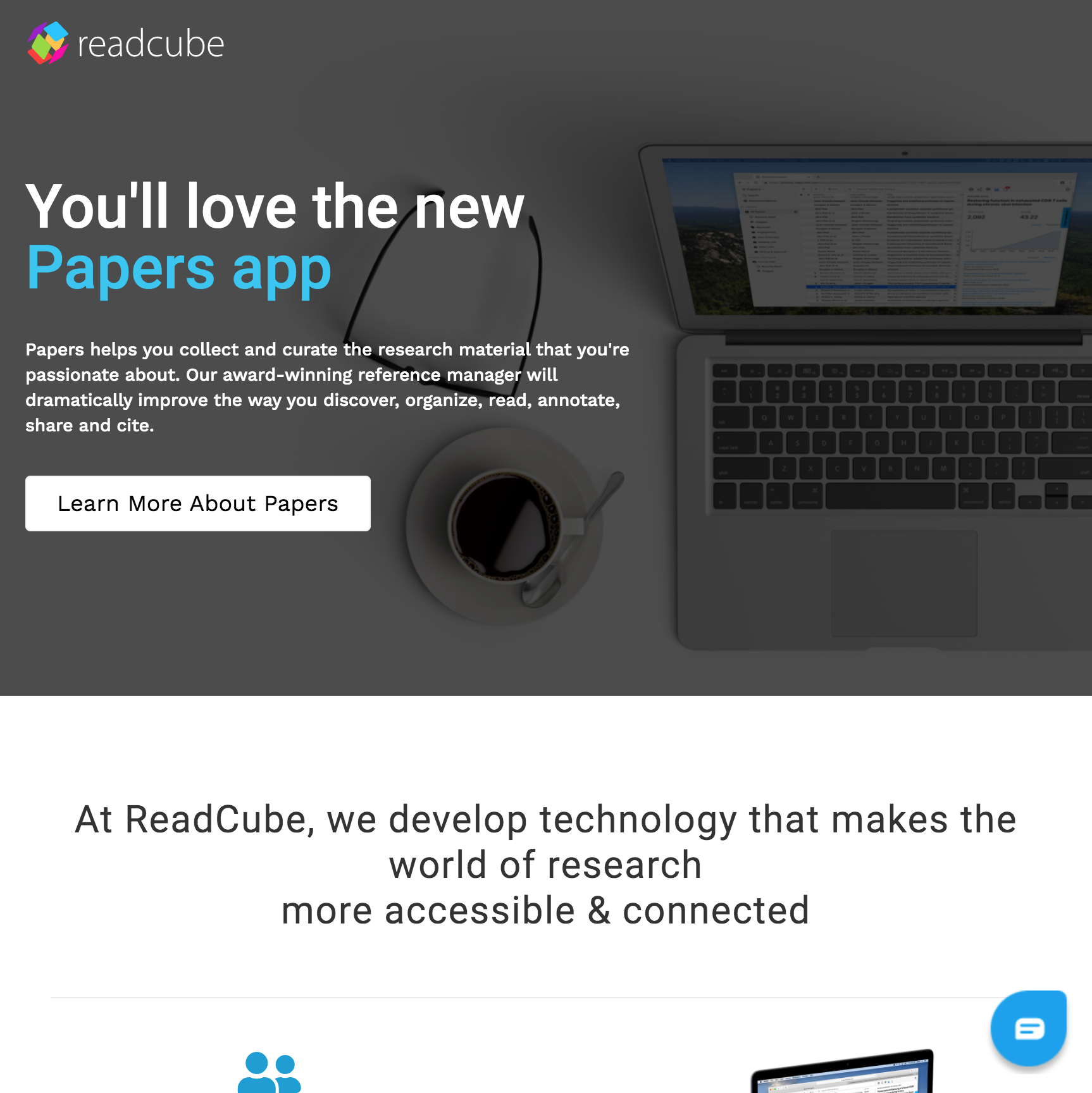
Everyone else seems to use the ABBYY FineReader engine, so they are all about the same. The problem I have faced in the past is pdfs are not good at maintaining structure, so during the highlighting annotation process, accurate highlighting and quotes can be problematic and distracting. I’d like and OCR system that allows me to easily correct it. Someone suggested converting to HTML? I am certainly open to options here.Ĭitation manager: Mekentosj Papers 3 before they were bought out by Digital Science & Research Solutions (Readcube) had its issues, but they were constantly improving and addressing customer complaints, and it does some things very well. However, as a legacy app, I hate to rely on it for much longer. I have used Mendeley, EZBib, ReadCube, and Zotero, besides being PaaS apps, they were awkward to use, but I will review updated versions of those. Anything else?Īnnotation I heartily recommend Highlights app for use with Obsidian.
Readcube papers specify publication date pdf#
Highlights, underlines, photos, and tables go into a sidebar with metadata and a back link to the pdf in Highlights. A key feature for me is that I can add a notes to each item I annotate. These notes become the text for a content outline and are essential to learning. Highlights has a handy feature for linking citations from each article’s references section. I can add tags and links for Obsidian here, if I want. I paste links and citekeys from Papers 3. I add a any more links and my literature notes are done.Īdding links and backlinks has always been a PITA, so I am planning to have Obsidian to a lot a heavy lifting in the note management, content outlining and actual writing process. I have to publish my final draft in Word for the Papers citation manager to work. I would enjoy some alternatives here too. Thanks for your feedback I’m glad my post was helpful. Some of the early approaches to a digital zettelkasten had highlights in one note, then you’d create a separate literature note for each big idea. I thought it would be easier to type in the literature notes directly above the highlights on the same page, then add a back-link heading (a one-sentence summary of the note) that you could organise in your index. So, let’s say you read an article and highlighted some good points. You would create a note for this in Obsidian called something like ].
Readcube papers specify publication date full#
The highlights would follow this structure: You would have your metadata at the top (author, date, link, full publication in APA), followed by all the highlights. H: The highlight from the original source.L: The note rewritten in your own words with your own insights.

If you highlight or take notes in the PDF, you'll be able to view, search, and filter these annotations outside of the PDF by clicking on the notes icon at the top of the article record. You should now see a big blue button that says "Read" - you can open the PDF within Papers to read and annotate the PDF, and save your annotations to reference later.ĥ. The full-text tab will close and you'll be brought back to your library tab, where the full text will import into the citation record. A box will appear asking you to confirm that you want to import the PDF into your Papers library - click the "Download" button to proceed.Ĥ.

Click the PDF button (the PDF button will look different depending on which publisher site you're on, but it should always be near the top of the page).ģ.


If Papers can find full text, a new tab will open in your app to the right of your Library tab - this new tab will contain a page for downloading the PDF of the article. Click on any citation in your library to open the full record, and then click on the "Locate PDF" button.Ģ.


 0 kommentar(er)
0 kommentar(er)
